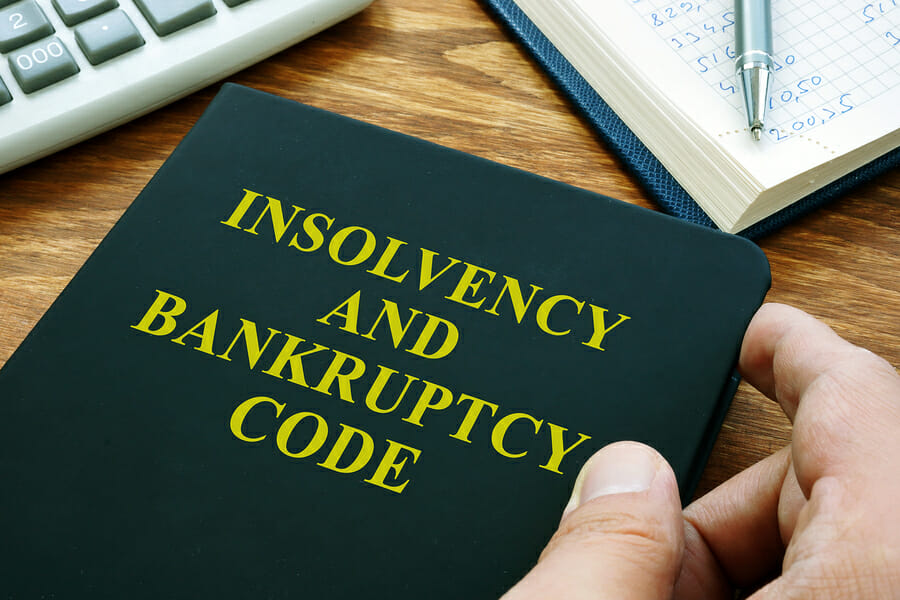Subsection 50(1) Election
Tax Relief on Losses with Bad Debts, Defunct Shares and Bankrupt Corporations
As investors, there may be times when you hold shares or debt of a company that is/are deemed worthless as a result of the company becoming bankrupt or insolvent. In such situations, defunct shares generally cannot be traded because the security is no longer listed on a stock market. Even if sold, the shares would likely have generated a capital loss.

There is a section of the Income Tax Act that allows you to claim a capital loss on these shares or debt even though you cannot sell them. This section also applies to debt owed by a corporation to a taxpayer. Under subsection 50(1) of the Income Tax Act (ITA) there is a provision (election) available for eligible investors granting them some tax relief. When properly applied, the election allows taxpayers to claim their investment losses.
Most investors are unaware of this election and therefore it is often overlooked. Without the election or an actual disposition, which may or may not be possible, taxpayers are left with losses that cannot be realized.
To apply the election successfully, the taxpayer must meet very specific conditions. When the election is filed properly, along with the year’s tax return, the taxpayer’s shares or debt are deemed to have been disposed of for nil proceeds at the end of the year and immediately reacquired by the taxpayer thereafter for adjusted cost base (ACB) equal to nil. As a result, this would trigger a capital loss or possibly an allowable business investment loss (ABIL), depending upon the facts, which the taxpayer will be able to realize on the property. For more information on ABILs, please see our article on Allowable Business Investment Loss (ABIL).
Application of Subsection 50(1)
Section 50 allows taxpayers to elect to claim a capital loss in two situations:
- 50(1)(a): When a debt owing to the taxpayer is established by the taxpayer to have become a bad debt and
- 50(1)(b): When the taxpayer owns shares in a bankrupt/insolvent corporation
Section 50(1)(a) – Bad Debt
In order to claim a capital loss on a bad debt, three conditions must be met.
- The debt owed by the debtor is a bad debt and it is owing to the lender at the end of the taxation year in which the lender wants to claim a bad debt.
The time at which a debt becomes a bad debt is a question of fact. The Federal Court of Appeal (FCA) has provided a list of factors which need to be considered (including the history and age of the debt, the financial position of the debtor, general business conditions in the country, etc.)1. After the lender considers the relevant factors, the question then is whether the lender honestly and reasonably determined the debt to be bad.
The Canada Revenue Agency (CRA) has also provided guidance on what constitutes a bad debt. According to the CRA, a debt is bad if it is uncollectible at the end of the tax year and the lender has exhausted all legal means of collecting it or where the debtor has become insolvent and has no means of paying it2. - The loan was made by the lender for the purpose of gaining or producing income from a business or property3.
It is possible that an interest-free loan can be made for the purpose of gaining or producing income from a business or property. The FCA has provided that where a taxpayer provides a loan to a corporation in which the taxpayer owns shares, a clear nexus exists between the taxpayer and the potential future income4.
Section 50(1)(b) – Shares in a Bankrupt Corporation
A taxpayer may claim a capital loss under subsection 50(1)(b) in three situations:
- The corporation has become bankrupt during the year in which the taxpayer wants to claim the loss.
- The corporation is insolvent, and a winding-up order has been made against it under the Winding-up and Restructuring Act.
- At the end of the year
a) The corporation is insolvent;
b) Neither the corporation nor a corporation controlled by it carries on business;
c) The fair market value of the shares is nil; and
d) It is reasonable to expect that the corporation will be dissolved or wound up and will not commence to carry on business.
Under this subparagraph, it may be possible to file the election to claim the capital loss in any year in which the above four conditions are met (they may be met year after year). Therefore, if a taxpayer missed the time period in which it is supposed to file an election as a result of a bankruptcy, that taxpayer may be able to rely on this clause to claim the loss without having to late-file the election.
Election Format and Procedure
In many cases, the CRA and/or the courts denies a taxpayer’s election because it was not properly filed. Unlike several other tax elections, there is no prescribed form on which to report the subsection 50(1) election. Income Tax Guide T4037 Capital Gains 2019, the tax legislation governing the election, specifies that the election must be made in the taxpayer’s return for the year. The guidance Canada Revenue Agency (CRA) has provided on the format and content of the election is as follows:
- The election should take the form of a signed letter, attached to the tax return, stating that the taxpayer wants subsection 50(1) of the ITA to apply to the shares in question.
- For returns that are electronically filed, all elections and supporting documentation must be submitted in writing. The taxpayer’s full name, address, and social insurance number should be clearly identified on all election forms and letters, and the cover letter should indicate that the documents are submitted in support of the taxpayer’s electronically filed return and state the intention to apply subsection 50(1) of the ITA.
- Where the business investment loss is in respect of shares of a small business corporation, information such as the name of the small business corporation, the number and class of the particular share(s) and the adjusted cost base of the share(s) should be provided. Where applicable, the date the corporation became bankrupt or the date of the winding-up order should also be provided.
Late-filed Elections
The CRA has discretion to accept late filed election requests. The request must be made on or before the day that is ten calendar years from the tax year in which the election was due. An accepted late election is subject to a penalty, which is the lesser of $8,000 or $100 for each complete month from the election’s original due date to the date the application is made in a form that is satisfactory to the CRA.
A taxpayer can request (in writing) that thee CRA waive these penalties. Any waiver of penalties by the CRA is at their discretion and will only be considered if the taxpayer can prove that the election was filed late as a result of certain conditions including:
a) extraordinary circumstances beyond the taxpayer’s control;
b) actions on the part of CRA prevented the taxpayer from making the election on time, or
c) the taxpayer is unable to pay the penalties due to financial hardship.
Allowable Business Investment Loss
If the debt is owed by a Canadian-controlled private corporation (CCPC), or the share is a share of a small business corporation (SBC), whose ownership and use of its assets meet certain conditions, the loss under subsection 50(1) from the shares of an SBC may result in a business investment loss, 50% of which is referred to as the “allowable business investment loss,” also known as ABIL.
Unlike capital losses, an ABIL is deductible against all sources of income, not just capital gains. While an ABIL may be carried back up to three years it can only be carried forward 10 years and deducted in calculating taxable income. An ABIL that is not deducted as a noncapital loss by the end of the carry-forward period becomes a net capital loss at the end of the tenth year. This treatment allows the loss to be carried forward indefinitely to be deducted against taxable capital gains beginning in the eleventh year.
Important Terms and Notes
Small Business Corporation
A “small business corporation” as defined in the ITA refers specifically to a Canadian-controlled private corporation of which substantially all (i.e. 90% or more) of the fair market value of the assets are used in an active business carried on primarily in Canada.
Superficial Loss Rules
Because of the s. 50(1) election, the superficial loss rules do not apply, even though the taxpayer is deemed to have immediately reacquired the shares.
Advantage of Election 50(1)
The advantage of this election is that the taxpayer can write off the investment while still retaining ownership. The corporation may “revive” and be worth something in the future. Any recovery of amounts previously deducted would have to be included as capital gains.
Cease Trading Order
It should be noted that the issue of a cease trading order (CTO) does not automatically suggest that the above conditions for s. 50(1) to apply are satisfied. A CTO is issued by a provincial or territorial securities commission against a company for failing to meet disclosure requirements and prohibits trading in that company’s shares; nevertheless, the company may continue to carry on business.
Application of Capital Losses
Generally, capital losses are deductible against capital gains only. Capital losses are applied first against capital gains in the current year and remaining losses can be carried back and applied to reduce/eliminate capital gains incurred in any of the three preceding tax years, or can be carried forward and applied to reduce/eliminate capital gains in any subsequent taxation year.
Supporting Documentation
In many of the published cases, the CRA and/or the Courts denied a taxpayer’s election because there was insufficient documentation to support the circumstances triggering the loss. It is therefore good practice for the taxpayer to ensure that sufficient and relevant information is properly documented. Ideally, this documentation should commence at onset of the financial problems. And, of course, this documentation should be retained.
Allowable Business Investment Loss (ABIL)
More often than not, ABIL claims are audited by the Canada Revenue Agency (CRA). The audit process usually involves the CRA reviewing the taxpayer’s claims, requesting the taxpayer complete a questionnaire and/or having him provide the CRA with additional information or documentation to support the claim.
End of the tax year – subsection 50(1) election
As it relates to a debt in circumstances described above or to a share in circumstances described above, the end of the tax year refers to the tax year of the taxpayer making the subsection 50(1) election.
Request to revoke a subsection 50(1) election
Under subsection 220(3.2) of the Act and paragraph 600(b) of the Regulations, the CRA may accept a request to revoke a subsection 50(1) election. An approved revocation would be subject to any penalty imposed under subsection 220(3.5) in respect of late-filed, amended or revoked elections.
Circumstances where a taxpayer might want to revoke a subsection 50(1) election could be where the taxpayer had honestly and reasonably determined that the debt had become uncollectible and made the election but without knowing that in the particular situation subparagraph 40(2)(g)(ii) applied to deem the capital loss on disposition of the debt to be nil. In these circumstances, the CRA will generally permit the taxpayer to revoke the subsection 50(1) election so that there is no deemed disposition or reacquisition of the debt. The result will be that any subsequent collection on the debt will reduce the taxpayer’s adjusted cost base of the debt rather than produce a capital gain.
Generally, the CRA will refuse a request to amend or revoke a subsection 50(1) election in circumstances where it is reasonable to conclude that the request is being made for retroactive tax planning purposes. This might be the case, for example, where a request is being made to revoke an election to avoid the operation of subsection 50(1.1). For further information about guidelines used by the CRA in determining whether to accept or reject a request to amend or revoke an election see Information Circular IC 07-1.
F.A.Q’s:
Citations
- Rich v R., 2003 FCA 38.
- CRA, IT-159R3, “Capital Debts Established to be Bad Debts.”
- Subparagraph 40(2)(g)(ii) deems to be nil all losses arising from the disposition of debts, other than debts acquired for the purpose of gaining or producing income from a business or property.
- Byram v R., 1999 CarswellNat 77.
-Baber Rahim, Tax Law Clerk & JD Candidate
Baber works in our tax department assisting our tax lawyers in preparing Voluntary Disclosure Applications, Taxpayer Relief Applications, and with Appeals, Audits and Objections within the CRA. Baber’s passion for tax law was sparked by an advanced tax law professor at the Goodman School of Business at Brock University, where he received his Bachelor of Accounting (Honours) degree. He subsequently worked for the Canada Revenue Agency (CRA) for several years. After working in the federal public service for a number of years, Baber decided to pursue a career in law and is currently working towards completing his law degree at Western University, while working for Kalfa Law Firm.
© Kalfa Law Firm 2020














